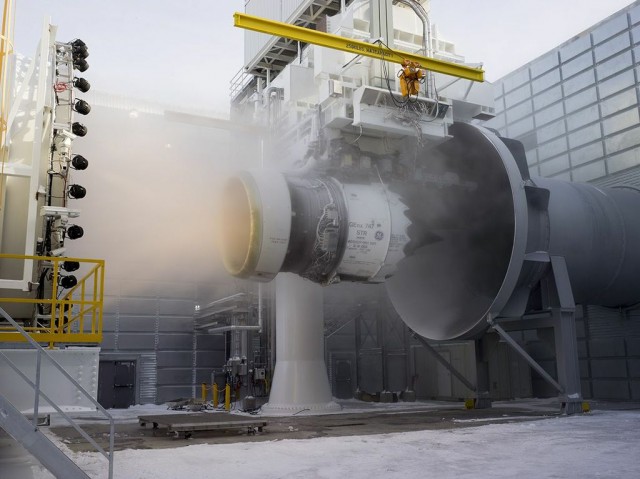
GEnx engine being tested in cold weather. Image from GE.
This story was written by Christopher L. McMullin (@787forlife) for AirlineReporter.com:
Have you ever wondered if an Iditarod trained Husky and airplane engine have anything in common? Well, they just might. General Electric is currently putting their engines to the cold test.
Last February, GE established the Engine Testing, Research and Development Centre (TRDC), a $50 million facility in Winnipeg, Manitoba (YWG). With recent updates, this allows engines to be tested year-round. At this 122,000 sq. ft. facility, the newest GE jet engines, including but not limited to the GEnx family, are pushed to their max. They undergo rigorous trials in extreme winter conditions. While it may be 30°F outside, these engines are able to be tested at a blade chilling -8°F. How’s that for cold blooded?
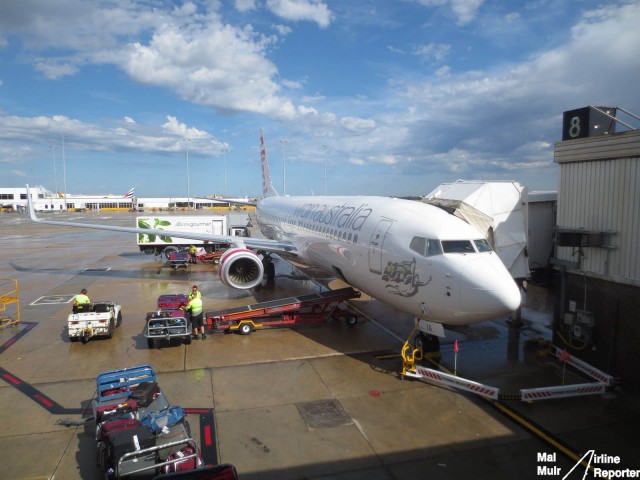
A Virgin Australia 737 at Melbourne Airport – Photo: Mal Muir | AirlineReporter.com
As an Australian expat, I will often have an opportunity to commute back to Australia for special events. This trip was one of those times. I got to head to Australia to attend a friend’s wedding (congrats Stuart & Michelle!) and thankfully it meant that I could combine a number of things together: a trip home to see friends and family, the wedding (obviously) and a mini mileage run with Virgin Australia to re-qualify for my gold status.
Though I had already re-qualified on points, I still had four segments required on Virgin Australia operated aircraft. As an AvGeek, I always look forward to these types of adventures.
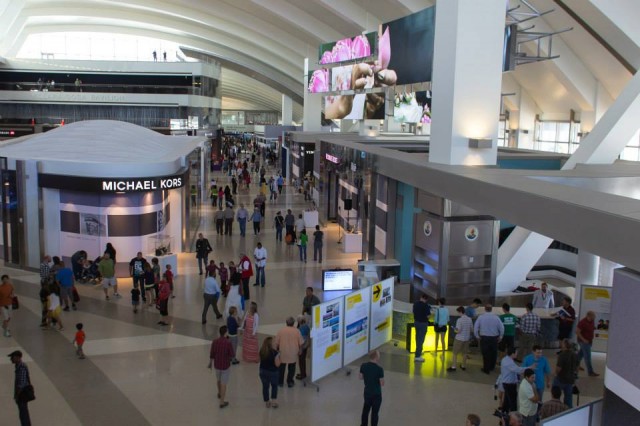
The main concourse is lined with stores. None of which were open during my visit.
This story was written by Kevin Epstein (AviationPhotographic.com \ @AvPhotographic) for AirlineReporter.com:
The new Tom Bradley Terminal may not yet be open to travelers, but it was a hive of activity this past Saturday, June 22nd. Los Angeles World Airports (LAWA) hosted an event called LAX Appreciation Day, where members of the public were invited to come and take a look at the new terminal and I went to go check it out.
The event was a major success with tickets to all 6 time slots being snapped up shortly after being made available. LAWA included free parking for all attendees, and shuttled us from parking to the terminal.
The new terminal, which costs around $1.9 billion, is part of a larger multi-year $4 billion project to revitalize not just the Bradley terminal, but other terminals around the airport too. The Bradley Terminal has been the main focus as it is the first and last thing arriving and departing international travelers will see. First impressions matter!
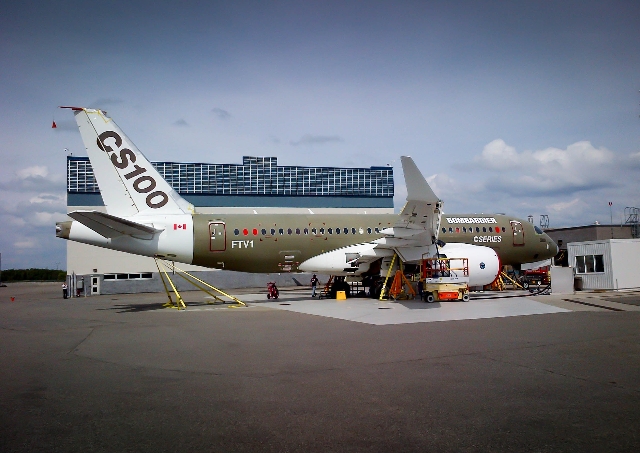
CS100 Flight Test Vehicle 1 (FTV1) during fuel flow testing. Photo: Bombardier Aerospace
Bombardier just announced that the first flight of the CS100 Flight Test Vehicle 1 (FTV1) has been delayed by a month to the end of July.
FTV1 still needs to do power runs, and low and high speed taxiing. As well, in their press release this morning, Bombardier says they’ve “extended the timeline slightly to allow for additional software upgrades for improved system maturity and functionality.”
Bombardier only applied yesterday to Transport Canada for FTV1’s Flight Test Permit, so perhaps the delay isn’t surprising.
We’ll continue to follow the story…
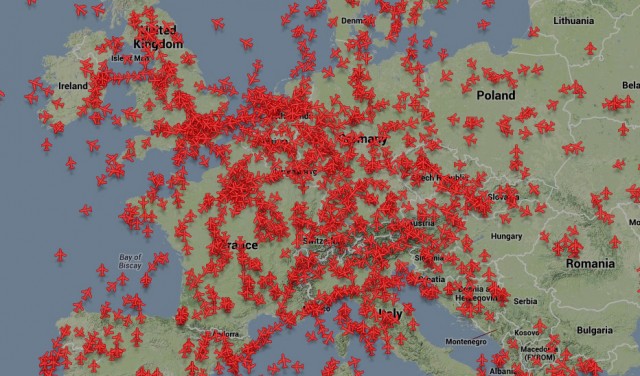
Many aircraft are flying over Europe at any given time. Image from PlaneFinder.net / Google Maps.
Story written by Steve Fulton, Technical Fellow at GE Aviation and shared on AirlineReporter.com:
We are taught from a young age about the importance of working together.
’œThere’s no I in team’ was a common inspirational poster in my children’s classrooms and libraries. This is certainly still relevant to our lives today — in business, it is critical for groups to partner to address a common challenge. This mantra is especially applicable to aviation, as we must work together to make the most out of our increasingly congested skies.
With business and government leaders and even industry enthusiasts gathering in Le Bourget for the Paris Air Show last week, we were reminded of the importance of an efficient airspace system that can accommodate increased demand in interconnected air travel. The international airport that supported the influx of visitors from around the world was Charles de Gaulle Airport, located outside of Paris. It is Europe’s second busiest airport and in 2011, the year of the previous Paris Air Show, the airport handled 514,059 aircraft movements and 60.97 million passengers.
Whether it’s to manage an increase in traffic to support a major event or to plan for steady global growth, stakeholders working as a team to create an efficient, interconnected sky — and a modern air traffic control system to effectively manage and improve it — will be critical to the success of the future of aviation.




